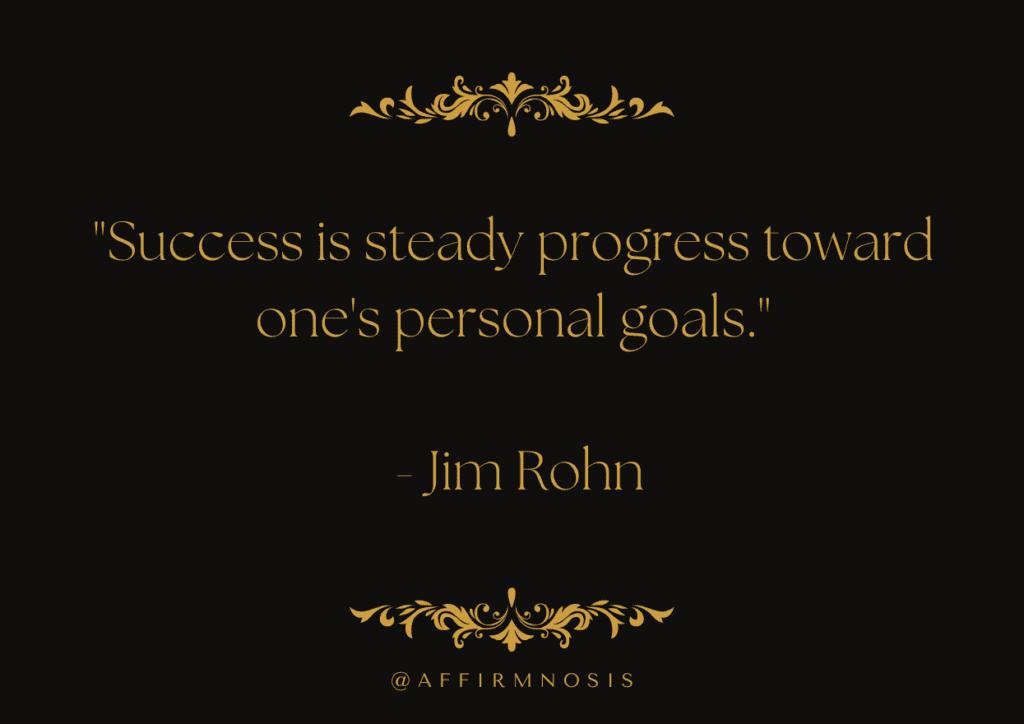People often dream of achieving long-term success and living an enjoyable life. However, many individuals tend to prioritize short-term satisfaction over their long-term goals. In contrast, those who adopt a long-term mindset understand the value of delayed gratification and the benefits of perseverance, patience, goal-setting, and growth mindset.
Mastering the Art of Delayed Gratification: The Power of a Long-Term Mindset
A long-term mindset is a way of thinking that prioritizes future results over immediate comfort or pleasure. It is characterized by a desire for sustained growth and improvement in one’s personal and professional life. This mindset is rooted in the belief that consistent effort and hard work can lead to enduring success.
Individuals with a long-term outlook see obstacles as challenges to overcome rather than roadblocks that prevent them from reaching their targets. They are willing to delay instant gratification in favor of working towards their big-picture goals.
Importance of Adopting A Long-Term Mindset
Adopting a long-term mindset has many benefits both personally and professionally; it allows individuals to build stronger relationships with others, establish more effective work habits, achieve more significant accomplishments, make better choices about money management, reduce anxiety levels while increasing overall happiness.
Having this type of perspective allows us not only to achieve our desired outcomes but also leads us to acquire personal qualities essential for our growth such as resilience, patience, determination among others.
Overview Of The Benefits Of Having A Long-Term Mindset
The benefits associated with adopting a long term mindset are numerous – they range from financial stability to improved health outcomes. One significant benefit is the ability for individuals to develop strong problem-solving skills necessary when pursuing their objectives.
Additionally having this type of approach helps people keep calm when met with unexpected setbacks which happen frequently on any journey leading you toward your goals it also enhances the ability to build healthy habits in your life, which is vital for long-term success.
Cultivating a long-term mindset is essential for those who want to achieve sustained success and live a fulfilling life. It involves prioritizing future goals over short-term pleasure and cultivating personal qualities that enable one to weather difficult times while staying on the path towards achieving those goals.
Understanding the Concept of Delayed Gratification
Delayed gratification refers to the ability to resist an immediate reward in favor of a larger, more meaningful reward that is deferred to a later time. It requires individuals to control their impulses and delay immediate pleasures for longer-term benefits. The concept was first introduced by psychologist Walter Mischel in the 1960s in his famous “Marshmallow Test” study.
Definition and Explanation of Delayed Gratification
Delayed gratification is essentially the ability to forego instant rewards for greater long-term gains. It involves sacrifice, self-discipline, and patience – all important traits that are necessary for achieving success in any endeavor.
Delayed gratification helps individuals develop a long-term mindset, which is essential for effective goal-setting, planning, and execution. At its core, delayed gratification involves making choices between now or later.
It requires us to evaluate short-term gains against long-term benefits and decide which one is more valuable and important. In essence, it means prioritizing long-term goals over temporary pleasures.
Examples of Delayed Gratification in Everyday Life
Examples of delayed gratification are all around us – from saving money for retirement to studying hard for good grades. In fact, many daily activities require delaying immediate gratification to achieve greater rewards later on:
– Dieting: Choosing healthy meals over junk food or desserts. – Saving Money: Deciding not to buy unnecessary items now but instead save that money over time.
– Education: Studying hard consistently over time instead of procrastinating until right before an exam. – Career Advancement: Taking on extra responsibilities or assignments at work even if they are challenging or require additional time commitment.
How To Develop The Habit Of Delaying Gratification
Developing the habit of delaying gratification takes intentional effort but it can be achieved. Here are some tips on how to cultivate this habit:
– Start small: Resist small temptations first and gradually build up to bigger ones. – Set goals: Have a clear understanding of what you want to achieve, and remind yourself of the long-term benefits of delaying gratification.
– Practice mindfulness: Being present in the moment and aware of your thoughts can help you identify impulses that may lead to immediate rewards that detract from long term goals. – Visualize success: Imagine what achieving your long-term goal would feel like, and use this vision as motivation for delaying gratification in the short term.
Developing delayed gratification skills is essential for cultivating a long-term mindset. By resisting immediate rewards in favor of greater future benefits, we can achieve our goals, develop self-discipline and ultimately succeed in all areas of our lives.
The Power of Goal Setting
One of the most important things you can do to develop a long-term mindset is to set clear and achievable goals. Without goals, it’s difficult to stay focused and motivated over the long haul.
The Importance of Setting Goals for Achieving Long-Term Success
When you have a clear vision of what you want to achieve, it’s much easier to make decisions that support your long-term success. In fact, studies have shown that people who set specific, challenging goals for themselves are more likely to achieve them than those who don’t.
This is because setting goals helps you clarify your priorities and focus your energy on what matters most. When you know what you’re working towards, it’s easier to say no to distractions and prioritize tasks that will move you closer to your goal.

Steps to Setting Achievable Goals
Setting goals sounds simple enough, but it can be difficult to know where to start. Here are some steps you can follow to set achievable goals:
1. Define Your Vision: Start by thinking about what you want your life or career to look like in the long-term. What are your core values? What brings you fulfillment?
2. Set SMART Goals: SMART stands for Specific, Measurable, Achievable, Relevant, and Time-bound. Make sure each goal meets these criteria so they are clearly defined with deadlines.
3. Break It Down: Once you have a big-picture goal in mind, break it down into smaller milestones so that achieving the bigger picture goal feels manageable.
4. Write It Down: Putting pen-to-paper (or typing on a computer) helps engrain the idea of achieving the goal into your mind further.
5. Review Regularly: Keep track of progress by checking in regularly with yourself or others around how things are progressing towards achieving each milestone and then eventually overall success.
Strategies for Staying Motivated and Focused on Achieving Your Goals
Setting goals is one thing, but staying committed to achieving them over the long-term takes resilience and determination. Here are some strategies for staying motivated and focused:
1. Make a Plan: Break down your goals into specific action steps and create a plan of attack that will keep you moving forward.
2. Find Accountability: Partner with someone who can provide guidance or hold you accountable to your progress.
3. Celebrate Wins: As milestones are achieved, take time to celebrate these accomplishments along the way.
4. Stay Positive: Keep a positive mindset throughout the process by focusing on progress instead of setbacks or failures.
5. Keep Learning: Continuously develop new skills or knowledge as needed to maintain momentum towards achieving long-term success.
Building Resilience and Perseverance
Resilience and perseverance are key attributes of a long-term mindset. Resilience means the ability to bounce back from setbacks, obstacles, or failures.
Understanding Resilience and Perseverance
It is an essential requirement for anyone who wants to achieve long-term success. Perseverance involves continuing on despite challenges and setbacks, which is necessary for achieving long-term goals.
A resilient individual has the ability to adapt to change and overcome obstacles. It is important to note that resilience can be learned and strengthened over time.
Those who possess this trait have the capacity to recover quickly from difficulties and remain focused on achieving their goals. Perseverance, on the other hand, is the practice of continuing forward despite obstacles or discouragement.
When pursuing a long-term goal, one may face many obstacles along the way that can cause them to give up. However, those with perseverance continue on even when things become challenging.
Strategies for Building Resilience and Perseverance
The good news is that resilience and perseverance are qualities that can be developed with time and effort. Here are some strategies you can use to cultivate these traits:
1) Practice Self-Care: Taking care of yourself physically, mentally, emotionally, socially helps you build resilience.
2) Mental Rehearsal: Mentally rehearse success scenarios so when it’s time you’ve already visualized potential failures.
3) Focus On Solutions: Be solution-oriented when facing setbacks instead of dwelling too much on problems faced.
4) Systematic Approach: Break down your long term goals into smaller sub-goals so you feel accomplished in making progress along the way
5) Seek Support: Accepting help from others who believe in your goals will strengthen your resolve
How to Overcome Obstacles and Setbacks When Pursuing Long-term Goals
Despite your best efforts, you may still encounter obstacles and setbacks on your journey towards your long-term goals. It is important to remain committed to the process of overcoming them. Here are some tips for overcoming obstacles:
1) Reevaluate Your Plan: Consider adjusting your plan in response to the obstacle. A new approach or perspective could be helpful.
2) Reframe the Situation: Look at the obstacle as an opportunity for growth and learning rather than a negative experience.
3) Seek Support: Reach out to individuals who can assist you with overcoming the obstacle, such as a mentor or coach.
4) Remain Focused on Your Goal: Keep your eyes on the prize. Remember why you started on this journey in the first place and how achieving this goal will benefit you in the long term.
Overall, building resilience and perseverance is essential for achieving long-term success. By understanding these traits, practicing self-care, focusing on solutions, accepting help from others, remaining committed despite setbacks or failure – you will develop a mindset that ensures success over time.
Developing a Growth Mindset
Definition and Explanation of Growth Mindset
A growth mindset is the belief that one’s abilities can be developed through hard work, dedication, and perseverance. Those with a growth mindset understand that failure and setbacks are opportunities for learning and personal growth.
They see challenges as opportunities to improve rather than obstacles to their success. It is important to note that having a growth mindset does not mean that one believes they can do anything they want without limitations.
Instead, it means that they believe they can develop their abilities through effort and practice. This mindset has been shown to lead to increased resilience, motivation, and ultimately success in achieving long term goals.
How to Cultivate a Growth Mindset
Cultivating a growth mindset requires intentional effort and self-awareness. One way to develop this mindset is by reframing negative self-talk into positive affirmations. For example, instead of saying “I’m not good at math,” try saying “I may struggle with math now, but with practice I can improve.”
Another way to cultivate a growth mindset is by embracing challenges as opportunities for learning rather than fearing them. This requires stepping out of one’s comfort zone and pushing oneself beyond perceived limits.
Surrounding oneself with individuals who also have a growth mindset can be helpful in developing this type of thinking. Being around others who believe in the power of hard work and dedication can be inspiring and motivating.
The Benefits of Having A Growth Mindset In Achieving Long Term Success
Individuals who possess a growth mindset are more likely to persevere through challenges because they view obstacles as opportunities for improvement rather than roadblocks to their success. They also tend to take more risks because they understand that failure is not permanent or defining.
In addition, those with a growth mindset tend to have higher levels of motivation and self-efficacy. They believe in their ability to overcome challenges and achieve their goals through hard work and dedication.
Individuals with a growth mindset are more likely to seek out feedback and constructive criticism because they understand the value of learning from others. This allows them to continuously improve their skills and abilities over time, ultimately leading to long term success.
The Role Of Patience In A Long-Term Mindset
Definition and Explanation of Patience in Relation to the Long Term
Patience is a crucial trait to possess when adopting a long-term mindset. It refers to the ability to wait calmly for what you desire, without experiencing frustration or anger. In the context of pursuing long-term goals, patience means persevering through setbacks and challenges while still maintaining self-control and focus on the end goal.
When it comes to achieving long-term success, patience is essential as it allows individuals to keep their eyes on the prize despite how far off it may feel. It helps them remain calm when facing difficulties, thus allowing them to make rational decisions that would take them closer towards their goals.
How To Cultivate Patience When Pursuing Your Goals
Patience is not an innate personality trait; rather, it can be acquired through deliberate practice. Here are some ways you can cultivate patience:
1. Practicing Mindfulness: By staying present in the moment and focusing on what’s happening now, you can reduce your stress levels and cultivate a patient attitude.
2. Setting Realistic Expectations: One reason people become impatient is because they expect too much too soon. Try setting realistic expectations for yourself so that you don’t become discouraged when things don’t happen as quickly as you’d like.
3. Celebrating Small Wins: Celebrating small victories along the way helps us maintain motivation towards our larger goals without feeling overwhelmed by unrealistic expectations or timelines.
Strategies for Staying Patient During Setbacks or Failures
It’s often frustrating when we experience setbacks or failures along our journey towards achieving long-term success. However, it’s essential that we maintain a patient attitude so that we don’t give up too soon! Here are some strategies for staying patient during setbacks or failures:
1. Reframe your mindset: Instead of thinking of setbacks as failures, try to reframe them as learning opportunities. Adopting this mindset will help you stay motivated and focused on the end goal.
2. Seek support: Surrounding yourself with supportive people can help you maintain a patient attitude when things get tough. They will remind you of your capabilities and keep you motivated when it all feels too much.
3. Take time for self-care: Taking breaks from work, exercise or other goals to practice self-care can be helpful in staying patient during setbacks or failures. This could look like indulging in a relaxing hobby, taking a walk outside or even treating yourself to something special.
Patience is an essential component of adopting a long-term mindset that leads to success in all aspects of life.
By understanding its definition and importance in relation to long-term goals, cultivating patience through mindfulness and realistic expectations, and developing strategies for staying patient during setbacks or failures – anyone can achieve their desired outcomes with time and dedication!
Importance Of Adopting A Long-Term Mindset For Success
Adopting a long-term mindset is critical for success in all areas of life. It helps us stay focused on our goals and enables us to overcome obstacles along the way.
By developing skills such as delayed gratification, goal setting, resilience and perseverance, growth mindset cultivation, and patience – we learn how to succeed in the long run.
A long-term perspective encourages us to invest in ourselves by learning new skills or taking courses that will contribute towards achieving our goals. It also teaches us how to assess failure as something that can benefit us in the future rather than an end-point.
Final Thoughts And Encouragement To Adopt A Long-Term Mindset
By adopting a long-term mindset we develop habits that help us succeed over time – such as consistent work habits or optimism through setbacks – which can be applied across any area of life whether personal or professional.
Begin by focusing on one area of your life where you want to see significant change: set achievable goals for yourself (big or small), develop daily routines that will encourage you towards these goals (even if just 15-minutes per day), practice self-care techniques like mindfulness or exercise when feeling stressed out from work/life pressures.
Remember that the process of developing a long-term mindset is a journey, not an overnight transformation – it takes time to develop these habits and practices.
But with perseverance, self-discipline and a growth mindset you can achieve the success you desire. Don’t give up!
20 affirmations for pursuing long-term goals:
- “I am capable of achieving my long-term goals.”
- “Every step I take brings me closer to my dreams.”
- “I have the power to change my life and reach my goals.”
- “I am committed and persistent in achieving my goals.”
- “I am patient and understand that great things take time.”
- “Challenges and obstacles are opportunities for growth and learning.”
- “I focus on what I can control and let go of what I can’t.”
- “I am disciplined and dedicated to my long-term success.”
- “I am continuously learning and adapting to achieve my goals.”
- “I believe in myself and my ability to succeed.”
- “Every day, I am getting closer to my goals.”
- “I am resilient and never give up.”
- “I celebrate small victories on the journey to my long-term goals.”
- “I have a clear vision of my future and I am working towards it every day.”
- “I am not afraid to step outside of my comfort zone to achieve my goals.”
- “I have the strength to overcome any setbacks.”
- “I am grateful for the journey and the lessons it teaches me.”
- “I am confident in my abilities and skills.”
- “I trust the process and know that everything is happening in its right time.”
- “I am creating the future I desire through consistent action.”
Remember, affirmations are more powerful when they are stated in the present tense, as if the desired outcome is already happening. Regular repetition and truly believing in these affirmations can help reinforce your commitment and motivation towards your long-term goals.




























































